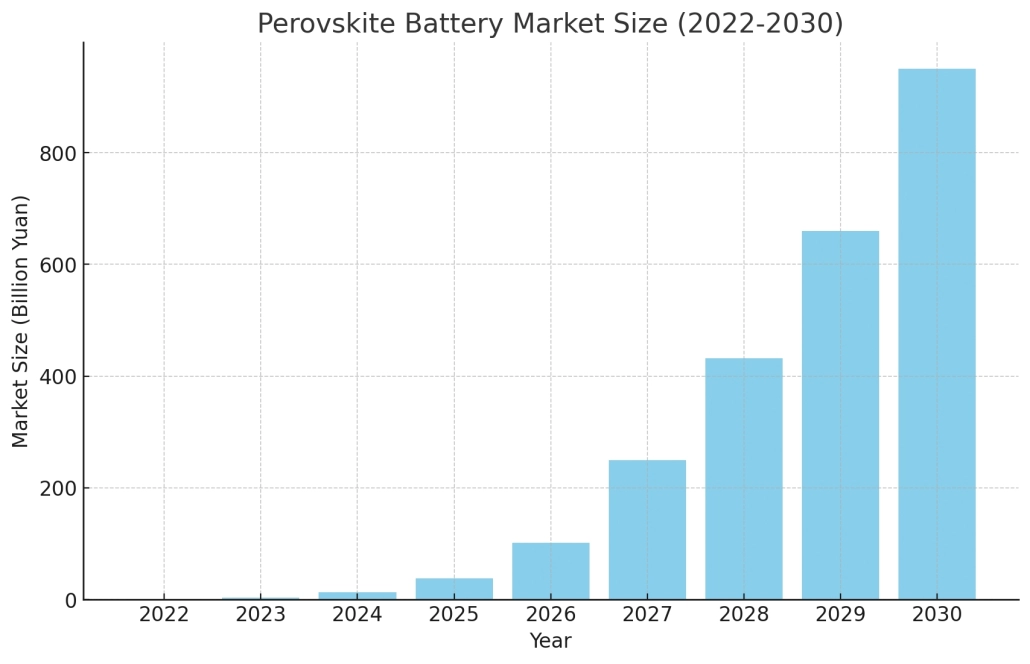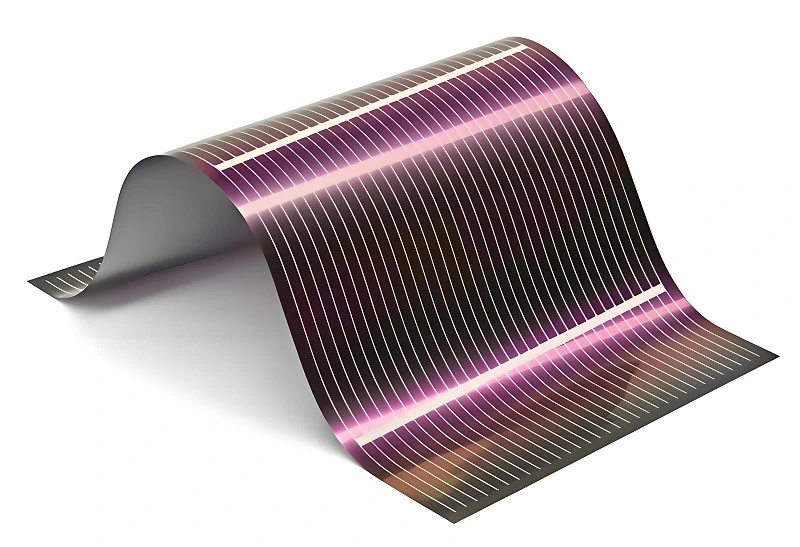2024 Are Perovskite Solar Cells Commercially Available?
Table of Contents
- 2024 Are Perovskite Solar Cells Commercially Available?
- Perovskite Solar Cells: Definition and Classification
- Industry Policies
- History of Perovskite Solar Cells
- Industry Barriers
- Industry Chain
- Current Industry Status
- Future Opportunities and Challenges
- Advantages of Perovskite Solar Cells
- Applications of Perovskite Solar Cells
- Challenges for Commercializing Perovskite Solar Cells
- Structure of Perovskite Solar Cells
- Are Perovskite Solar Cells Commercially Available?
- Future Outlook
- How Do Perovskite Solar Cells Work?
- Inverted Perovskite Solar Cells Using Dimethylacridine-Based Dopants
- Flexible Perovskite Solar Cells
- Perovskite Solar Cell Manufacturers
- Conclusion: Future Potential for Perovskite Solar Cells
- Learn More About Battery
Perovskite solar cells are gaining momentum as a new generation of photovoltaic technology due to their high efficiency and low manufacturing cost. With recent advancements in perovskite tandem solar cells, which can achieve over 30% efficiency, the market is witnessing increased interest in adopting these cells. In 2023, the penetration rate of perovskite solar cells in China was only about 0.2%, indicating a small but growing presence. However, ongoing research and supportive industry policies are likely to boost adoption in the coming years.

Perovskite Solar Cells: Definition and Classification
Perovskite solar cells are a type of third-generation solar cell that uses perovskite-structured organic-inorganic halide semiconductors as light-absorbing materials. These cells are often referred to as new-generation solar cells due to their unique structure and high efficiency. Currently, perovskite solar cells have reached a crucial stage for commercialization. According to 2023 data, the market penetration of perovskite solar cells in China was about 0.2%. As technology continues to evolve, the adoption rate of perovskite solar cells in China is expected to grow in the future.
There are two main types of perovskite solar cells: single-junction and tandem perovskite solar cells. A single-junction cell contains a simple “sandwich” structure of perovskite layers. In contrast, perovskite tandem solar cells can stack multiple perovskite layers or combine them with traditional silicon-based cells to create a structure that captures a broader range of the solar spectrum. Depending on the materials used, tandem cells can follow different configurations, including silicon/perovskite tandem cells, all perovskite tandem solar cells, and thin-film/perovskite tandem cells such as CIGS/perovskite tandem cells.
Industry Policies
In recent years, China has implemented multiple policies to encourage the development and innovation of the perovskite solar cell industry. In January 2023, the Ministry of Industry and Information Technology, along with five other departments, issued the “Guiding Opinions on Promoting the Development of the Energy Electronics Industry,” which proposed coordinated development of perovskite solar cells (including perovskite/silicon tandem cells), amorphous/microcrystalline silicon thin-film cells, and other high-efficiency thin-film technologies. The goal is to expand the application fields to include BIPV components, automotive components, and outdoor applications.
In March 2024, the Henan Provincial Government Office released the “Notice on Accelerating the Breakthrough of the ‘Six New’ Industries in Manufacturing,” emphasizing the need to focus on the development of crystalline silicon photovoltaic cell materials and compound thin-film materials. This includes large-size single-crystal silicon, polycrystalline silicon, and thin-film technologies, as well as new high-efficiency perovskite solar cell materials and CIGS thin-film cells. The aim is to build a comprehensive industry chain covering silane, granular silicon, single-crystal silicon wafers, battery cells, and power stations.
History of Perovskite Solar Cells
The history of perovskite solar cells began in 1839 when the German scientist Gustav Rose discovered the perovskite mineral. In 2006, perovskite solar cells were first used in photovoltaic applications. In 2009, Japanese scientist Miyasaka utilized perovskite materials as light absorbers in dye-sensitized solar cells, achieving a power conversion efficiency of 3.8%. By October 2021, researchers at the Korea Institute of Science and Technology achieved a 25.8% efficiency for single-junction perovskite solar cells.
In August 2022, the Chinese Academy of Sciences reported an efficiency of 25.6%. In October 2020, the U.S. Department of Energy’s National Renewable Energy Laboratory achieved a 23.1% efficiency for all perovskite tandem solar cells. In December 2020, the UK’s Oxford PV set a record with 29.5% efficiency for perovskite/silicon tandem cells. The German Helmholtz Center increased this to 29.8% in November 2021, and by July 2022, Switzerland’s EPFL achieved 31.3%.
On November 3, 2023, the U.S.-China National Renewable Energy Laboratory (NREL) certified that a perovskite-silicon tandem cell developed by Chinese photovoltaic company Longi Green Energy achieved an efficiency of 33.9%, the highest record for perovskite-silicon tandem cells worldwide.

Industry Barriers
1. Technical Barriers
The development of perovskite solar cells requires significant technical expertise and long-term research. New entrants into the perovskite solar cell industry face the challenge of breaking through critical technologies and achieving mature applications, which can take considerable time and effort. The research and production of materials, cells, modules, battery packs, and battery management systems all demand high technical capabilities. Without mastering these core technologies, companies will struggle to produce competitive products.
2. Brand Barriers
The perovskite solar cell industry has high brand entry barriers. Key factors influencing customer choices include product safety, stability, consistency, and fast-response capabilities. It typically takes a long time for products to be validated by the market and gain customer trust. Companies with strong overall capabilities and established brands are more likely to win customer confidence and stand out in the industry.
3. Scale Barriers
The perovskite solar cell industry also has substantial scale barriers. Large-scale production benefits from economies of scale, giving financially strong companies a significant advantage in raw material procurement and production operations. Additionally, continuous investment is necessary to stay ahead in technology development. Only large-scale enterprises can maintain their competitive edge through ongoing innovation and research.
Industry Chain
1. Perovskite Solar Cell Industry Chain Analysis
The perovskite solar cell industry chain consists of upstream, midstream, and downstream segments. The upstream segment includes raw materials and equipment, such as perovskite compounds, target materials, TCO glass, and light-absorbing materials. Key equipment includes coating machines, laser machines, deposition equipment, and encapsulation machines. The midstream focuses on perovskite solar cell manufacturing, while the downstream segment involves applications in photovoltaic industries, LED production, catalysts, metal-air batteries, gas-sensing materials, and magnetic cooling materials.
2. Analysis of Leading Companies
2.1 CATL (Contemporary Amperex Technology Co., Ltd.)
Founded in 2011, CATL is one of the leading manufacturers of power batteries in China, focusing on new energy vehicle power systems, energy storage systems, and other applications. Their core technologies cover the entire value chain, from materials and battery cells to system integration and battery recycling. CATL has partnered with several leading domestic automakers and established a strong presence in global markets.
In the perovskite solar cell field, CATL views perovskite tandem solar cells as a key future technology and is actively accelerating research and industrialization efforts. They are also advancing pilot-scale production to further their ambitions in the photovoltaic sector.
2.2 Longi Green Energy Technology Co., Ltd.
Established in 2000, Longi Green Energy is committed to becoming the world’s most valuable solar technology company. The company focuses on technological innovation, offering solutions across monocrystalline silicon wafers, cells, modules, distributed photovoltaic systems, and hydrogen energy. With a brand mission of “making full use of the sun’s rays to create a green energy world,” Longi has become a global leader in high-efficiency silicon-based technology.
In November 2022, Longi set a world record for silicon-based solar cell efficiency at 26.81%. By November 2023, Longi’s self-developed perovskite tandem solar cell reached an efficiency of 33.9%, establishing a new global record. In 2023, Longi’s revenue from modules and cells increased by 16.91% year-over-year, reaching 99.199 billion RMB, mainly due to higher sales of solar modules.
Current Industry Status
Currently, emerging perovskite solar cell manufacturers in China are rapidly entering the market, pushing the industrialization of perovskite solar cells forward. The technology is still in its early stages of commercialization, with ongoing iterations in cell structure, material systems, manufacturing processes, and production equipment. Perovskite solar cell manufacturers are actively validating various technical pathways and accelerating the process of mass production. As of 2023, the penetration rate of perovskite solar cells in China stood at 0.2%. As the technology continues to mature, the adoption rate of perovskite solar cells is expected to increase in the future.
Future Opportunities and Challenges
Despite the promising future for perovskite solar cells, several challenges remain for their widespread adoption. One of the main obstacles is the difficulty in achieving long-term stability and reliability, as perovskite solar cells are known to degrade faster than traditional silicon-based cells. Additionally, the cost of perovskite solar cells must be reduced to become competitive with other technologies. Companies must also address the challenges of scaling up production and overcoming regulatory hurdles to ensure that perovskite solar cells are both efficient and affordable.
Advantages of Perovskite Solar Cells
Perovskite solar cells offer several significant advantages compared to traditional silicon-based solar cells, making them a promising technology for future energy solutions. Below are some key advantages of perovskite solar cells:
- High Efficiency: Efficiency of perovskite solar cells has rapidly increased in recent years, reaching over 25% for single-junction cells and even higher for perovskite tandem solar cells. This rapid improvement is one of the main reasons the technology is considered highly attractive.
- Low Cost: One of the main benefits of perovskite solar cells is their lower production cost. The manufacturing process for perovskite solar cells is less complex and energy-intensive than that of traditional silicon cells, leading to potentially lower prices.
- Lightweight and Flexible: Flexible perovskite solar cells can be produced on various substrates, including plastic films, making them ideal for applications where lightweight and flexibility are crucial. This feature opens up new possibilities for portable and wearable energy solutions.
- Customizable Bandgap: The bandgap of perovskite solar cells can be tuned by adjusting the chemical composition, allowing them to capture a broader spectrum of sunlight. This property is especially beneficial for creating high-efficiency all perovskite tandem solar cells.
Applications of Perovskite Solar Cells
The applications of perovskite solar cells extend beyond conventional rooftop solar installations. Their versatility allows for integration into a wide range of settings:
- Building-Integrated Photovoltaics (BIPV): Perovskite solar cell applications include incorporation into building materials like windows and facades. The cells’ transparency and aesthetic appeal make them suitable for BIPV projects.
- Portable and Wearable Devices: The lightweight nature of flexible perovskite solar cells makes them ideal for small-scale electronics, such as portable chargers, wearables, and sensors.
- Automotive Industry: Perovskite solar cells can be integrated into vehicles to provide additional power for onboard electronics or even partially charge electric vehicles.
- Space Applications: Because of their lightweight and high-efficiency properties, perovskite solar cells are being explored for use in space-based solar panels.
Challenges for Commercializing Perovskite Solar Cells
Despite their potential, several challenges for commercializing perovskite solar cells need to be addressed before they can be widely adopted:
- Stability Issues: A significant challenge for perovskite solar cell manufacturers is ensuring long-term stability under real-world conditions. Exposure to moisture, oxygen, and UV light can degrade the cell materials, affecting their lifespan.
- Scalability: Transitioning from lab-scale production to large-scale manufacturing is a complex task. Maintaining high efficiency of perovskite solar cells while scaling up production is a key hurdle.
- Toxicity Concerns: The use of lead in perovskite solar cells raises environmental and health concerns. Researchers are working to develop lead-free alternatives, but these have yet to match the performance of traditional perovskite cells.
- Cost of Perovskite Solar Cells: Although perovskite solar cells are cheaper to produce than silicon cells, the overall perovskite solar cell price must decrease further for widespread market adoption.
Structure of Perovskite Solar Cells
The structure of perovskite solar cells is relatively simple compared to traditional silicon cells. It typically includes a perovskite absorber layer sandwiched between two transport layers:
- Electron Transport Layer (ETL): This layer helps transfer electrons generated in the perovskite layer to the external circuit.
- Perovskite Layer: The perovskite layer is the heart of the cell, where light absorption and electron-hole pair generation occur. This layer can be customized to optimize the cell’s performance.
- Hole Transport Layer (HTL): This layer collects holes (positive charge carriers) and transfers them to the circuit.
- Substrate: The entire cell is usually built on a substrate, which can be either rigid (glass) or flexible (plastic), depending on the application.
Are Perovskite Solar Cells Commercially Available?
One common question is: are perovskite solar cells commercially available? Currently, only a limited number of perovskite solar cell manufacturers have begun small-scale commercialization. Some companies are offering perovskite solar cells for niche applications such as portable electronics and research purposes. However, widespread adoption for large-scale power generation is still in the early stages due to the challenges mentioned earlier. As technology advances and perovskite solar cell price decreases, commercial availability is expected to expand.
Future Outlook
The future of perovskite solar cells is promising, with ongoing research aimed at overcoming existing barriers and enhancing performance. Continuous efforts to address stability, scalability, and environmental concerns will be crucial for the successful commercialization of perovskite solar cells. As a result, perovskite solar cell manufacturers are investing heavily in research and development, making this technology one to watch in the renewable energy market.
How Do Perovskite Solar Cells Work?
Understanding how perovskite solar cells work requires a look into their unique structure and the way they convert sunlight into electricity. The process can be summarized in a few key steps:
- Light Absorption: When sunlight hits the perovskite solar cell, the perovskite layer absorbs photons, which then excite the electrons in the material, creating electron-hole pairs (also known as excitons).
- Charge Separation: The excitons are separated into free electrons and holes, which are collected by the electron and hole transport layers. The electron transport layer (ETL) transfers electrons to the electrode, while the hole transport layer (HTL) directs the holes to the opposite electrode.
- Charge Collection: The separated electrons and holes move to their respective electrodes, creating an electric current. This current can then be used to power external devices.
- Energy Conversion: The electricity generated is direct current (DC), which can be converted to alternating current (AC) for use in most residential and commercial applications.
By optimizing each layer and improving the material quality, researchers are continually pushing the efficiency of perovskite solar cells higher.
Inverted Perovskite Solar Cells Using Dimethylacridine-Based Dopants
Recent advancements have led to the development of inverted perovskite solar cells using dimethylacridine-based dopants. In conventional perovskite cells, the electrons and holes travel in a particular direction, but inverted structures reverse this configuration. Inverted perovskite solar cells are beneficial for achieving better stability and are easier to integrate into tandem configurations.
The addition of dimethylacridine-based dopants enhances the performance of the hole transport layer, increasing the overall efficiency of the cell. This innovation is a step toward solving some of the long-term stability issues of perovskite solar cells.
Flexible Perovskite Solar Cells
Flexible perovskite solar cells are a breakthrough technology that can be used in applications where traditional rigid solar panels are not suitable. By using flexible substrates such as plastic or thin metal foils, these cells can be bent, rolled, or even folded without losing efficiency. This makes them ideal for portable power solutions, wearable technology, and curved surfaces such as car roofs.
The main challenge for flexible perovskite solar cells is maintaining stability and performance under mechanical stress. However, ongoing research is focused on improving the durability and lifespan of these flexible cells, making them a promising option for future energy solutions.
Perovskite Solar Cell Manufacturers
Currently, there are a few key perovskite solar cell manufacturers leading the charge in commercializing this technology. Some of the top perovskite solar cell manufacturers include:
- Oxford PV: A UK-based company that specializes in perovskite tandem solar cells. Oxford PV has set multiple efficiency records and is now focused on scaling up production for commercial use.
- Saule Technologies: A Polish company pioneering flexible perovskite solar cells. Saule Technologies aims to bring perovskite solar cells to a variety of applications, from building-integrated photovoltaics (BIPV) to portable electronics.
- GCL-Poly Energy Holdings: A Chinese company actively involved in the research and development of perovskite solar cells. GCL is investing in large-scale production facilities and plans to enter the commercial market in the coming years.
- Hunt Perovskite Technologies: Based in the United States, Hunt Perovskite Technologies is working on overcoming the stability issues of perovskite solar cells and aims to bring this technology to the North American market.
These perovskite solar cell manufacturers are leading innovation and pushing the industry forward. As research progresses and production scales up, more companies are expected to join the market.
Conclusion: Future Potential for Perovskite Solar Cells
The future of perovskite solar cells looks promising as researchers continue to address challenges such as stability and scalability. With their unique properties and potential to combine with existing silicon cells, all perovskite tandem solar cells could soon lead to a new era in solar energy. As the cost of perovskite solar cells decreases and the technology matures, it is expected that these cells will play a key role in the global renewable energy market, providing a more affordable and efficient solution for solar power generation.





